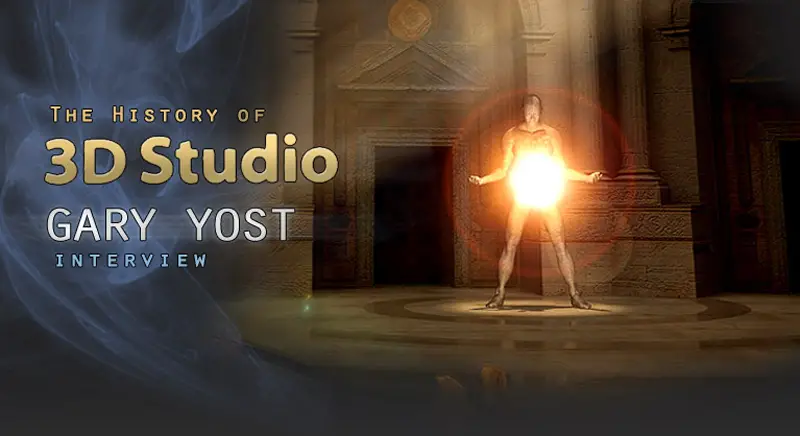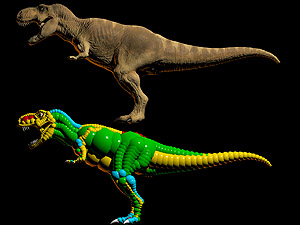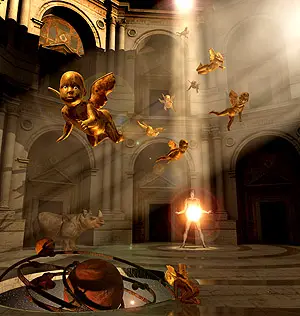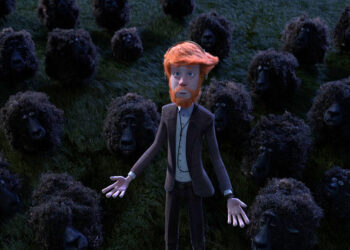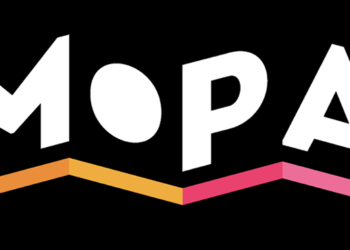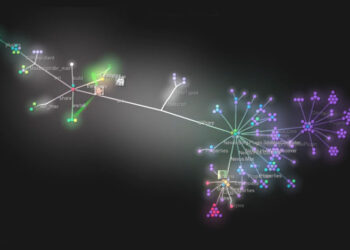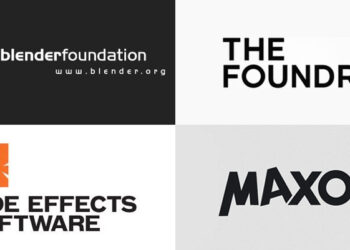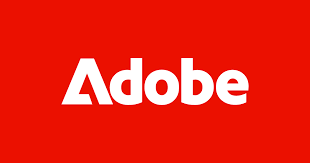– IPAS, plugins and scripting capabilities have been critical to 3D Studio/Max’s success. Were you involved (or would’ve liked to be involved) in the development of any particular Max plugins? Which plugins/scripts developed for 3DS/Max have surprised you?
Max plugins? No. I primed the IPAS plugin pump with my catalog of add-ons to 3DS/DOS because we needed to show people what could be done with a plugin interface. But Max was so all-consuming that I had no additional bandwidth to put into Max plugins. Of course I’ve been astounded at all the creative plugins that have been developed over the years, but that was expected… it was why we put all that work into the Max SDK.
– Why did you decide to leave the Max team?
I had been operating under the “deferred-life plan” for about 10 years by 1998, and there were a lot of other things I wanted to do. Photography was my first passion and I wanted to re-explore my relationship to that, plus my family needed to get out of San Francisco and find a house in a more rural area surrounded by nature. But the biggest thing that my wife and I wanted was to adopt our second daughter, Ruby (which we did, from China, in 2001). That has been the biggest joy of my life.
– What have you been up to since leaving the Max team? Please tell us a little about your work at Mental Images.
After starting up version 2 of our family I began to have some very interesting conversations with Rolf Herken at mental images about how it may be possible to add a 3D backbone to the internet to make interactive 3D possible on a global scale. His vision led to the development of RealityServer. I was involved with that on a consulting basis until we began to get serious about the idea of a device-independent rendering language that would solve the myriad of problems with shaders that arose because they were platform-specific. This was a really meaty problem, and Rolf Berteig had been doing some research in this area. I came on board officially, brought RolfB into the mental images fold about four years ago and the results have been tremendous. Max now ships with MetaSL language support along with the mental mill editor, and that’s tremendously satisfying. MetaSL is now being used by major Hollywood studios and will be integrated into many other DCC and CAD apps in the near future. You can read more about mental mill, MetaSL and RealityServer on the mental images site.
Beyond that I’m raising a beautiful daughter and love the work I’m doing with my personal imaging work. I’m going to start teaching photography to middle-school students next year, which is really exciting for me.
– What is your current perception of the CG industry? How has the industry changed since you started developing 3D Studio, and what role do you think 3DS had in those changes?
Hmmm…. Consolidation. When I started it was a highly fragmented industry with hundreds of different small software entrepreneurs developing lots of creative tools, healthily competing with one another. Now of course the Big Three are all owned by Autodesk, and that’s certainly changed the competitive dynamic. Also, when I began doing this many of these tools were very expensive… in the tens of thousands of dollars. We began the trend of cost-reducing professional tools, but that got out of hand for awhile – sort of a commoditization of the market. Customers started to expect an awful lot of functionality for a very low price… lower than the costs of actually developing this stuff. And that put a lot of great engineers out of work. Many have since moved on to other industries. So there’s been a brain drain due to this low-cost price expectation and I feel partly responsible for that. Those high prices in the old days weren’t sustainable though, and it was one of the reasons consolidation happened. Perhaps this was all part of the process. Who knows?
– Why do you think 3D Studio / Max has become the widest selling 3D software for almost 20 years?
It’s the same reason why the Swiss Army Knife is still so popular. We wanted to make a tool that could be used by anybody to do anything. It was a lofty goal but the market proved that we succeeded. And I attribute that success in great part to the stellar design and engineering work of Tom Hudson, Dan Silva, Don Brittain and Rolf Berteig. Plus we had a real human being on our team to vet all of our designs… Jack Powell. Without Jack our work would’ve ended up as a bunch of arcane tools, usable only by true mutants. There are lots of other people who we’re indebted to as well. Mark Meier, Gus Grubba, Jamie Clay, Martin Doudoroff, Kyle Peacock, and many great people at Autodesk (and elsewhere) who took the ball and ran with it in such creative ways. Max is a huge team effort and never would’ve been possible without this gestalt of imagination that blossomed at that particular place and time.
– Do you feel that the graphics field is as exciting as it was 10-20 years ago, or has innovation basically slowed down these past few years?
Sure, it’s always going to be exciting. The goal in 3D computer graphics is to pretty much play God within the silicon. Nature is an awesomely complex system and the attempt to simulate the universe is a never-ending quest. You can see what James Cameron has done with Avatar as a great example of a good signpost along the road. The mocap is very close to perfect, and the rendering is getting better and better. (Actually the potential is there now for the rendering to be purely photorealistic in such a film, instead of the cartoony quality that we see now. It would just take much more time and be even more expensive. That’s coming soon.)
I always used to say at our big yearly user events at Siggraph that any specific release of 3DS was a finger pointing at the moon. And who knows? One day we might actually walk on that moon. We’ll see.
– What are the most interesting developments that you see coming up for the future of CG?
For me, the most interesting work is in this area of making all DCC and CAD apps work together in the field of rendering. A shader you create on any platform is renderable by every MetaSL-compliant hardware and software renderer on the planet, and it’s future-proofed so that it’s renderable for all time. That’s my particular niche right now, and I love it. And on a larger front, the concept of making interactive 3D a ubiquitous part of the Internet experience is a super challenge that we are making great strides towards.
Of course there are a lot of other developments coming up, but most of them are going to be evolutionary updates to existing technologies instead of radically new ideas like MetaSL and RealityServer.
– You mentioned choosing the name Cyber Studio for Antic’s software because the company was creating tools for “graphiker pilots to voyage into their imaginations”. How has the profession of CG artists evolved from the early days of 3D Studio to these days?
The word Cyber was originally derived from the Greek root Kubernetes, which means “helmsman” or “ruler”. I chose to use Cyber for our tools just after reading William Gibson’s seminal work “Neuromancer”, which launched the concept of Cyberspace. Our dream was to help make that possible. Little did we know at the time how challenging that would be. So, how have things evolved for CG artists? The tools are certainly better and more complex. This has led to more and more specialization in the field. I used to envision these tools as being so general purpose that anyone would be able to design and build characters and sets, then animate and light them and we’d all be Renaissance-level creators. That jack-of-all trades dream is still only available to a relatively small group of very creative and special individuals. I have always had the utmost respect for them, and their work always inspired me to go farther creating better tools.
– You participated and saw the birth of many socially-oriented CG activities and trends. How has the net changed 3D related social activities and CG software development?
How? In pretty much every way conceivable. The Internet has made it possible to share ideas, which creates a synergy that nourishes creativity in unpredictable ways. The early versions of the net made it possible for us to use Compuserve as a place for our customers to meet and tell us what they wanted. That was key to our success. Now it’s possible to share everything… the net is the fertilizer for the global organism that we’re constantly creating with our minds.
– What one piece of advice would you give the team currently working on Max in Montreal?
Keep listening to customers but always focus on reliability.
– Any interesting or funny anecdote that you recall from 3DS / Max development?

A gift from Gary Yost to 3D Studio users – some recent photos from his imaging work. More images can be found at his photography portfolio.
The night before submitting our Jaguar specification to Autodesk in 1994, I was completely exhausted. I had to go to Kinkos to make a bunch of copies of it, and on the way I took my wife out to dinner at a Chinese restaurant in SF called Ton Kiang. After dinner, they brought us fortune cookies and my fortune read “Your future plans are going to succeed.” I took that over to Kinkos, taped it to the back page of the spec, and the rest is history.
– Have you ever felt tempted to become the head of the Max development group a second time (sort of like Steve Jobs’ return to Apple)? If so, what would be some new directions you’d like to bring the software? Would you develop it as cross-platform software, for ex?
No. Been there. Ken Pimentel, Shane Griffith and their team at Autodesk have done a fantastic job continuing to grow Max. That has allowed me to happily move on to new projects while feeling that our "baby" is well taken care of.
We made the decision not to go cross-platform because of our small size. Autodesk themselves had originally been highly cross-platform with AutoCAD, but it caused so many headaches that they shut that down to focus on Windows. It’s the old story about spreading yourself too thin. It’s extremely challenging to support multiple operating systems. That said, we’re multi-platform at mental images and although it adds many dimensions of complexity, the tools now exist to be able to manage it. It’s a necessary evil for us in the component software business.
– Any particular images or short films created with Max that you enjoy especially?
I’m not too current on all the work out there, but as Tom noted in his piece, I have to bow to Alex Roman for his masterpiece “The Third and the Seventh.” That’s exactly the type of work that would’ve spurred us on to much greater heights in the past. We fed off that kind of outrageously amazing stuff. Without it, we never would’ve had the energy to push as hard as we did. My Dad was an architect, and he would’ve been absolutely floored by seeing what Alex did with Max.
– Anything you’d like to mention to readers that we haven’t asked you about?
Hmmm…. Just that I want to thank all the Max users out there for being such good sports. You pushed us when we needed it, and you also cut us some slack when we had to move on. I’m grateful for all of it.
I had a tradition back in the old days of writing a haiku poem to accompany each of the weekly releases during our beta periods. It was a fun way to end a hectic week and it brought a little sense of peace into our crazy lives. While working on this interview for you I came up with this one to sum up my feelings on this winter day.
Twenty years later.
The rain still falls. The sun shines.
We remember friends.
We would like to thank Gary Yost for sharing with us his experiences from years of working on 3D Studio development, for all the effort he dedicated to this article, for his kindness and generosity. Also for the extra effort he took in finding, processing and recovering the images from the Yost Group and making the best out of them so we could present them to the public. We would also like to thank Tom Hudson, Michael Girard, Susan Amkraut and Martin Doudoroff. A special thanks goes to José María De Espona, for all his goodwill and help in the preparation of this article.
Part I: Tom Hudson interview
Part II: Gary Yost interview
Part III: De Espona on the Max Temple image

